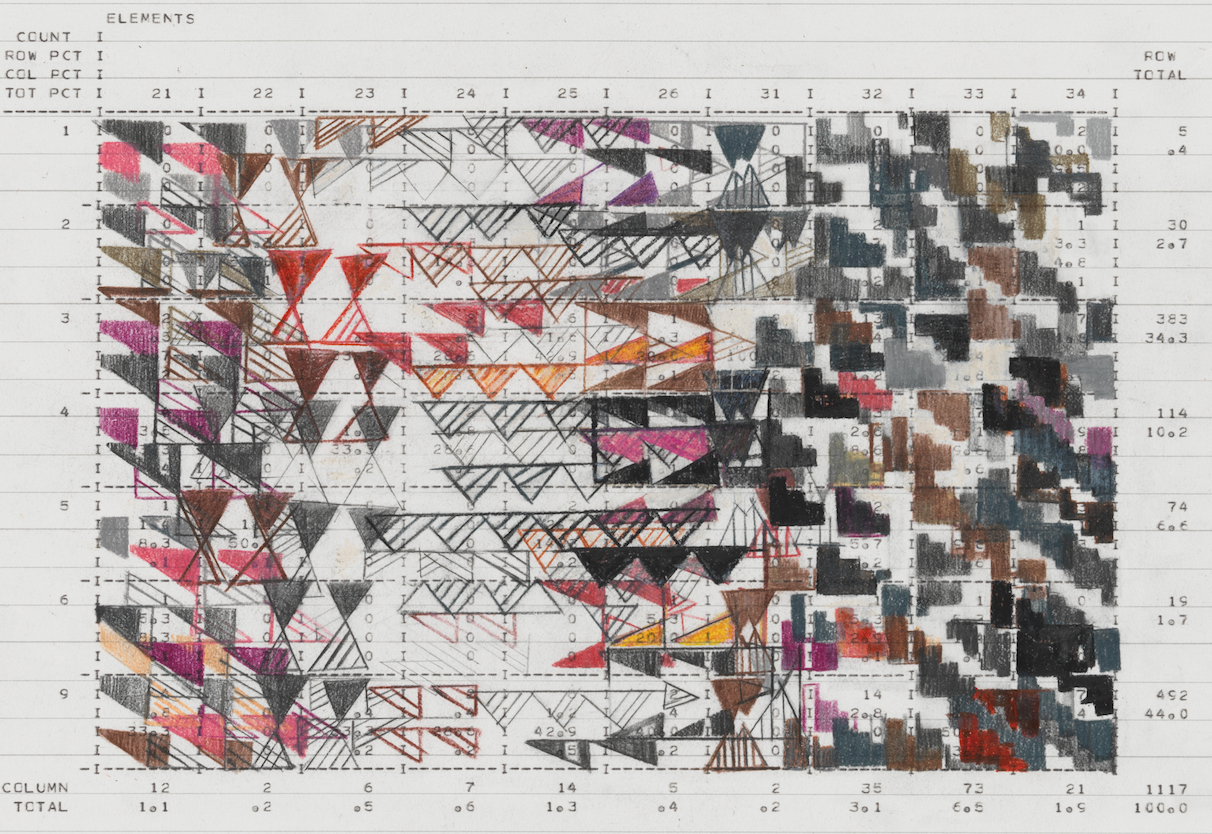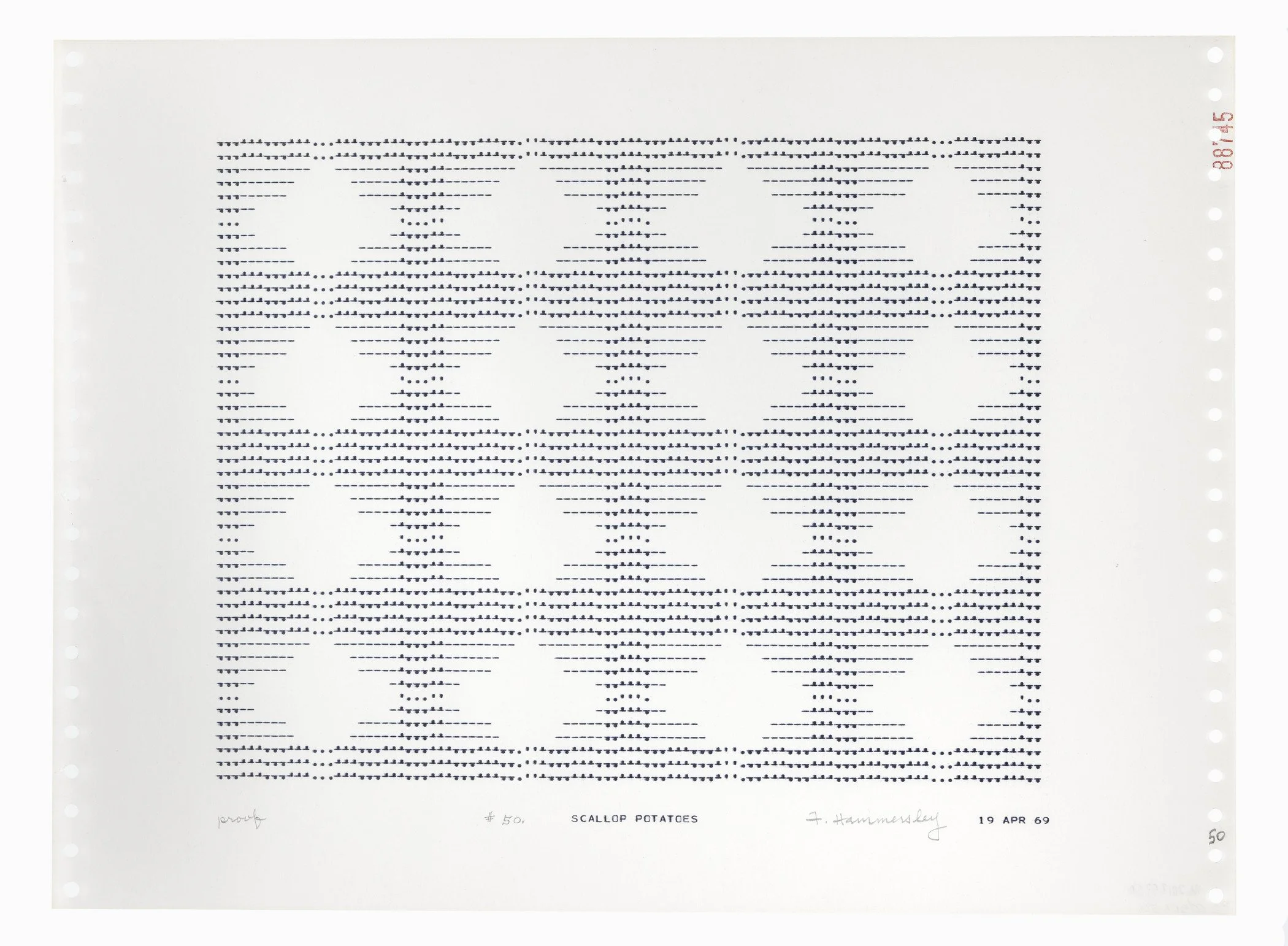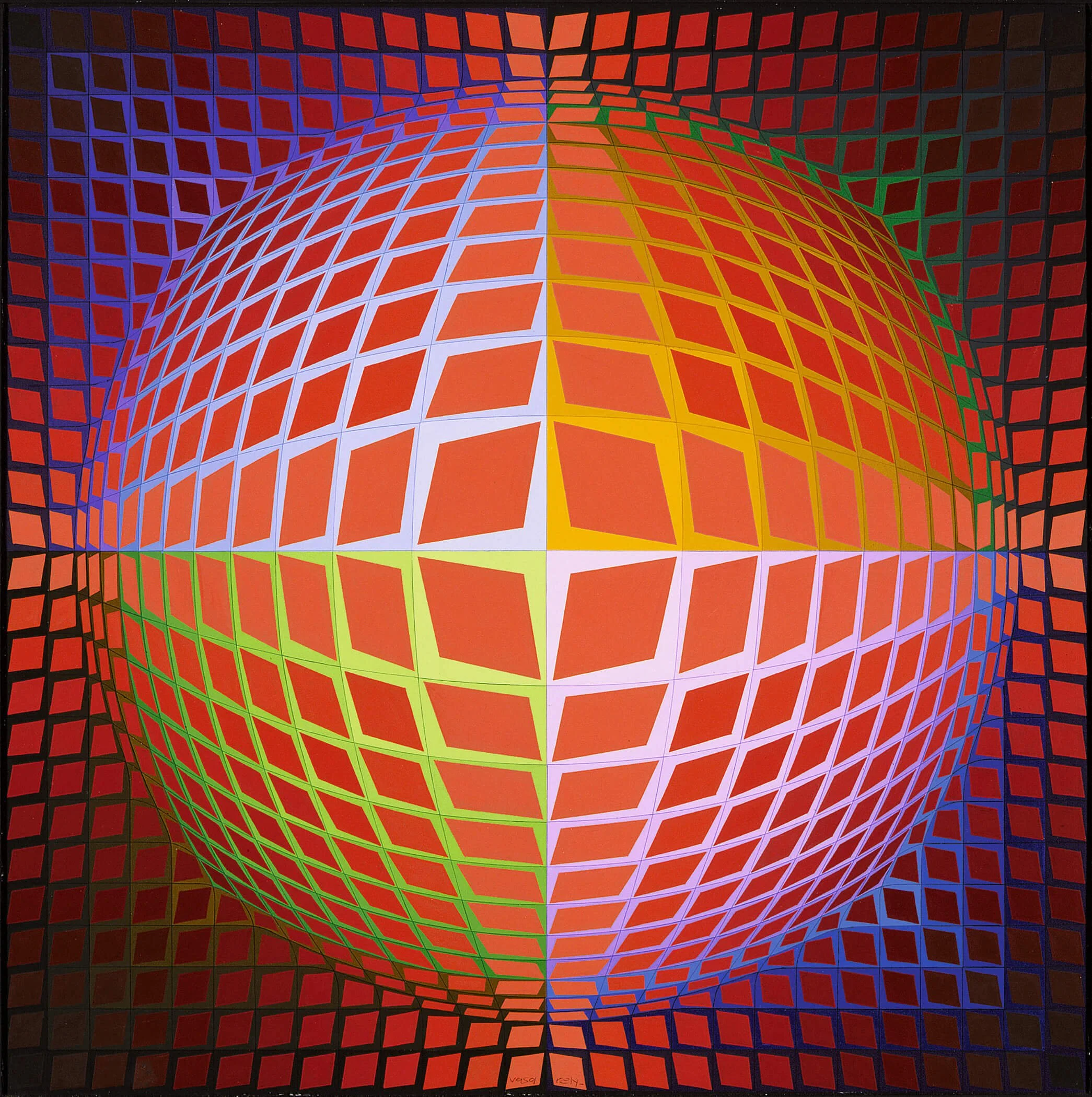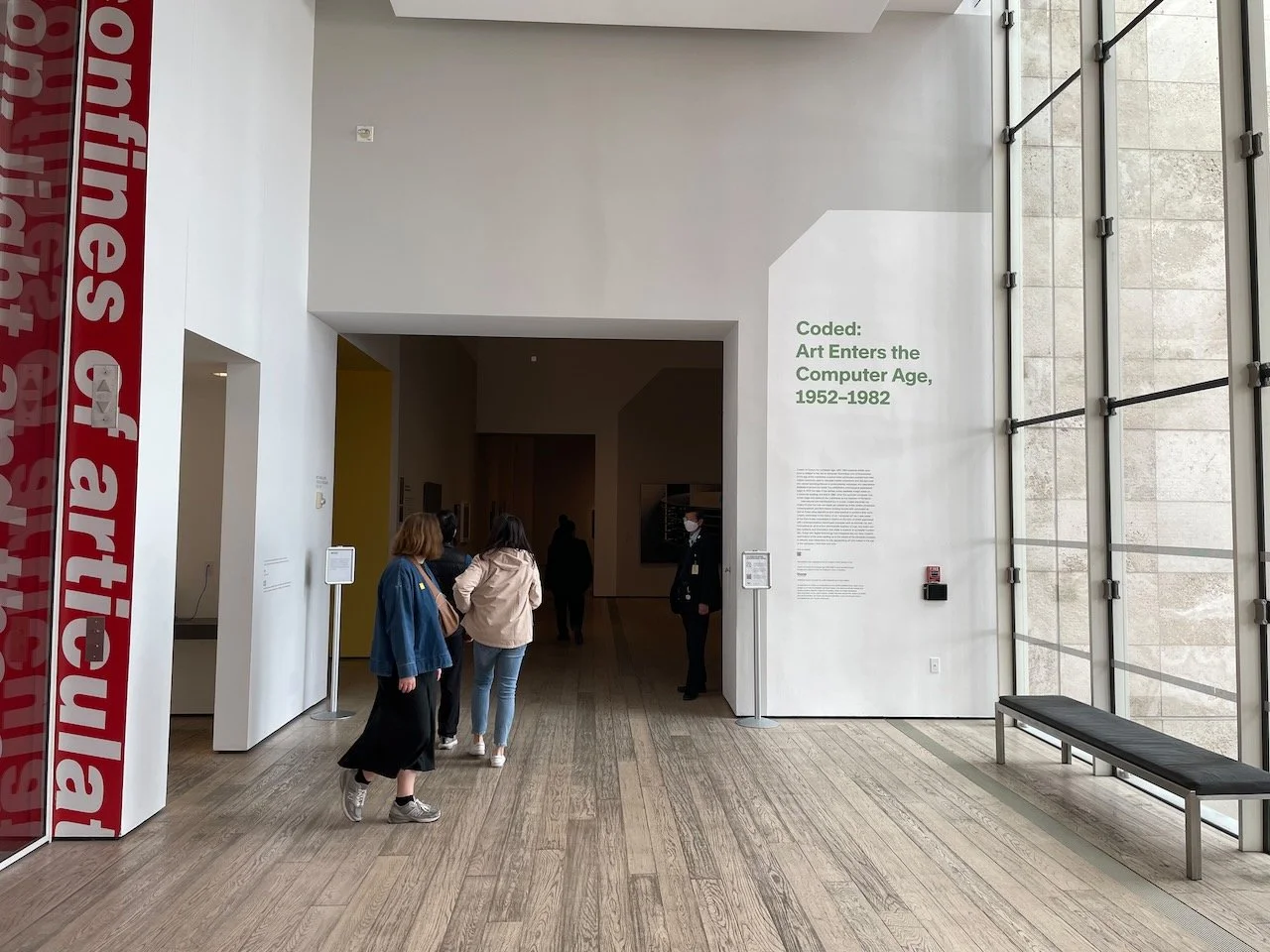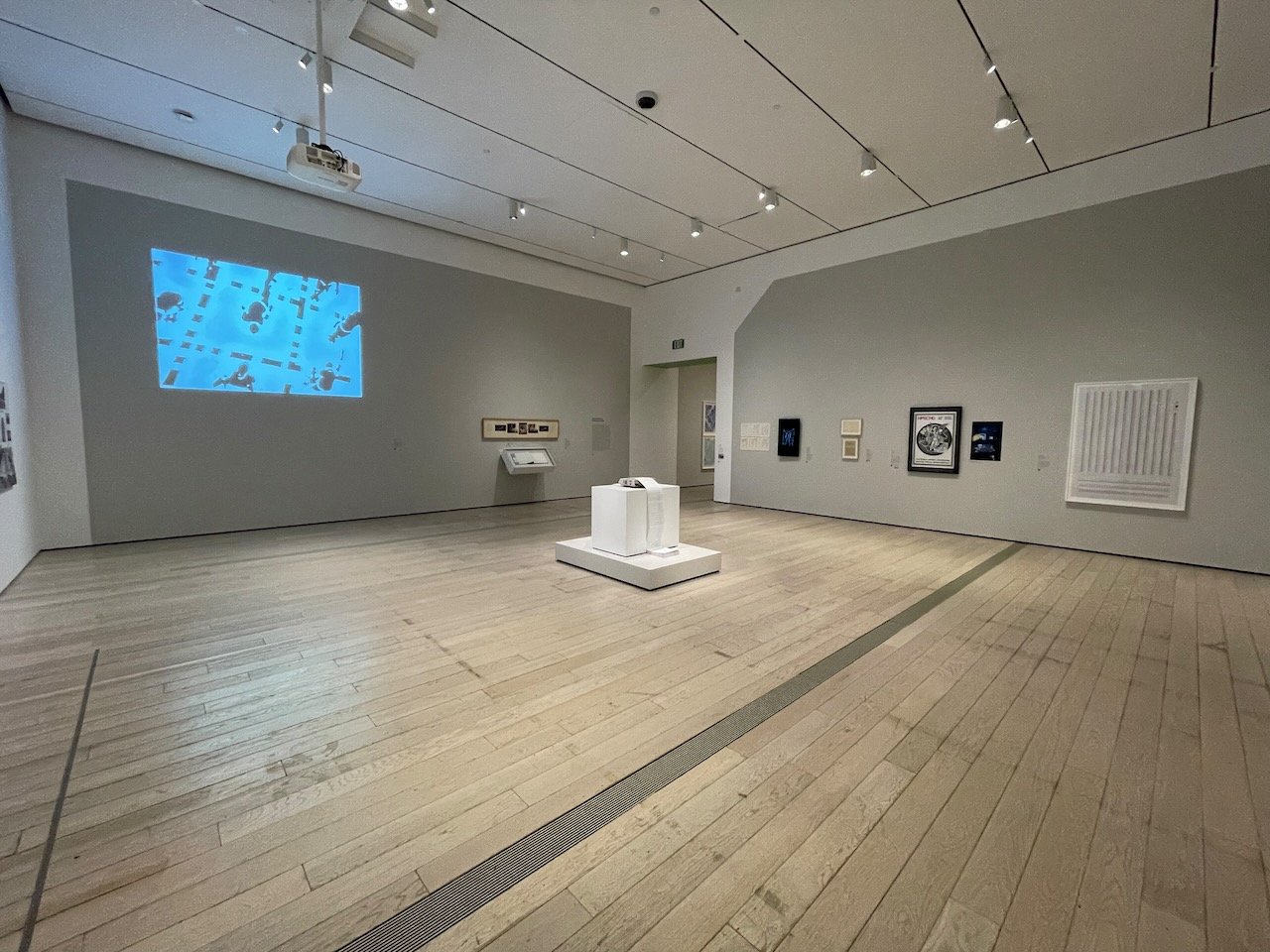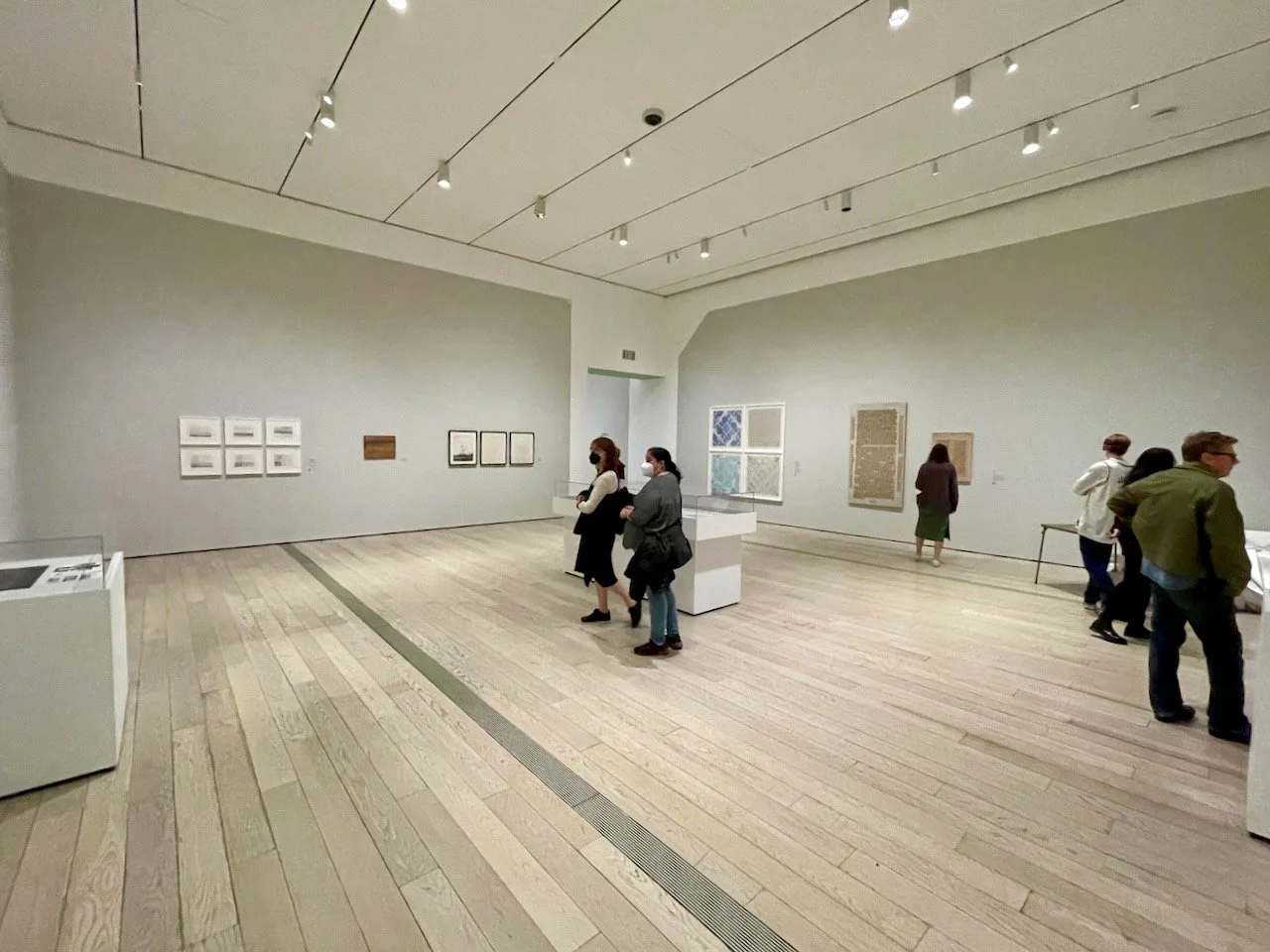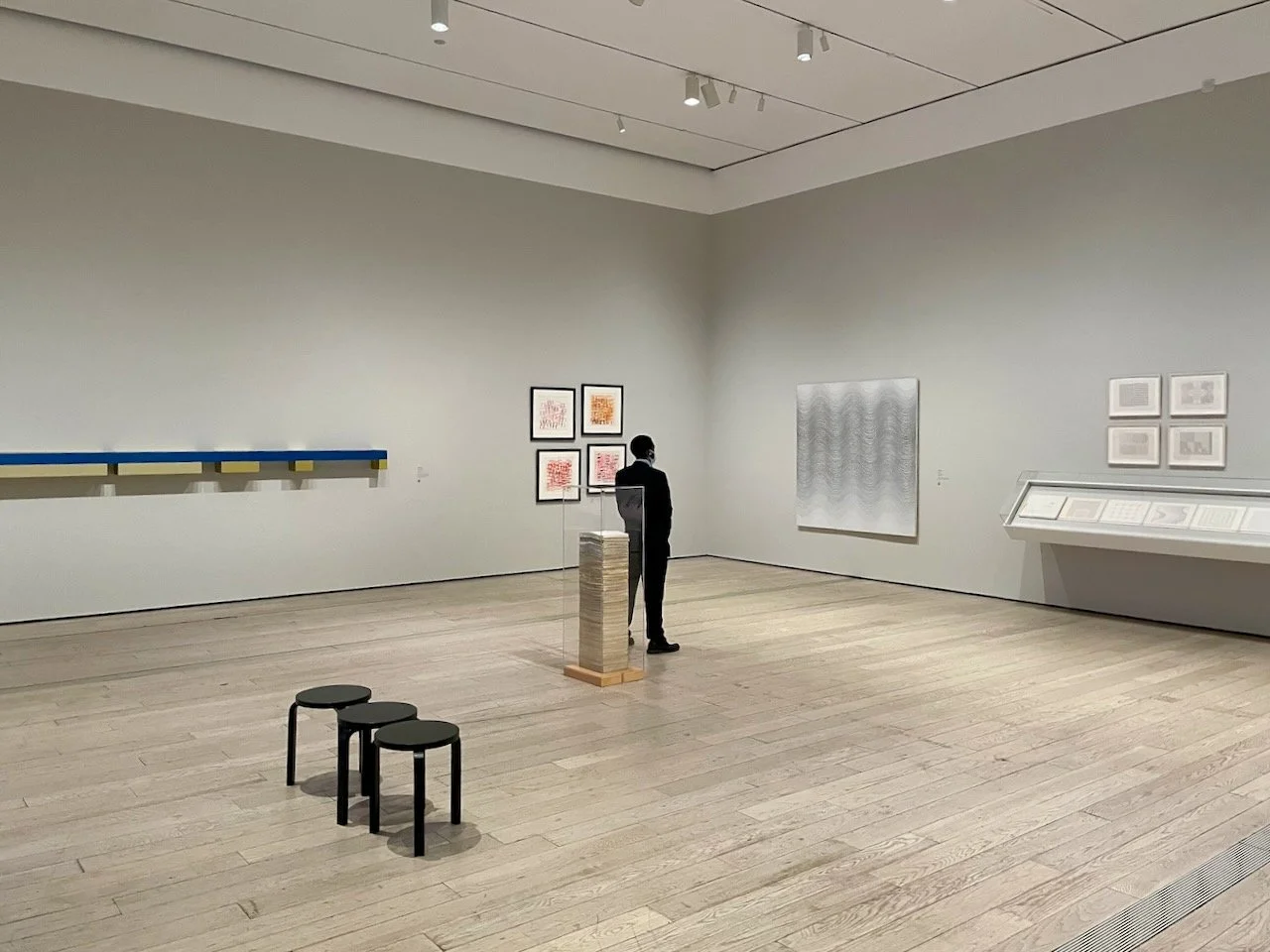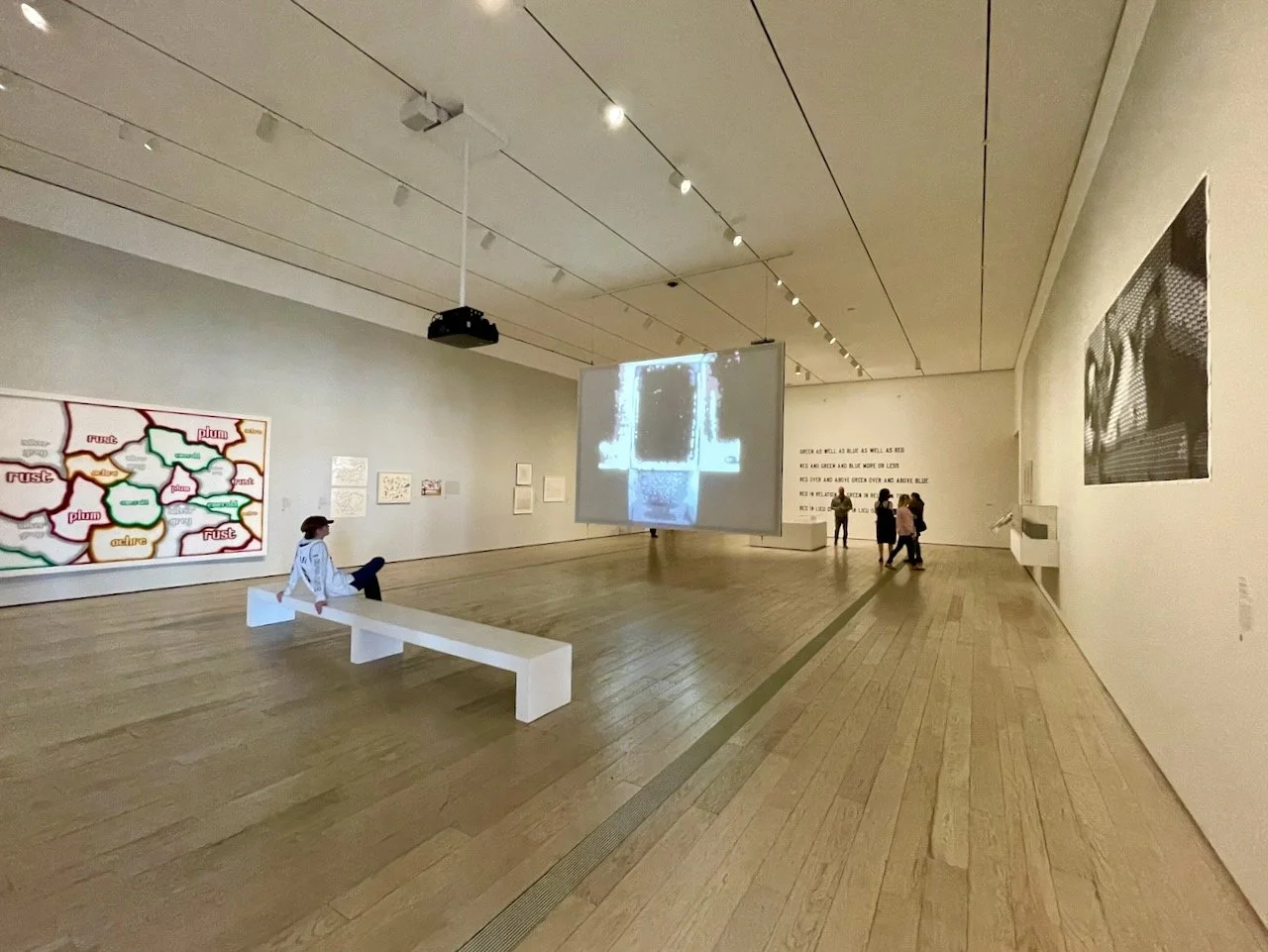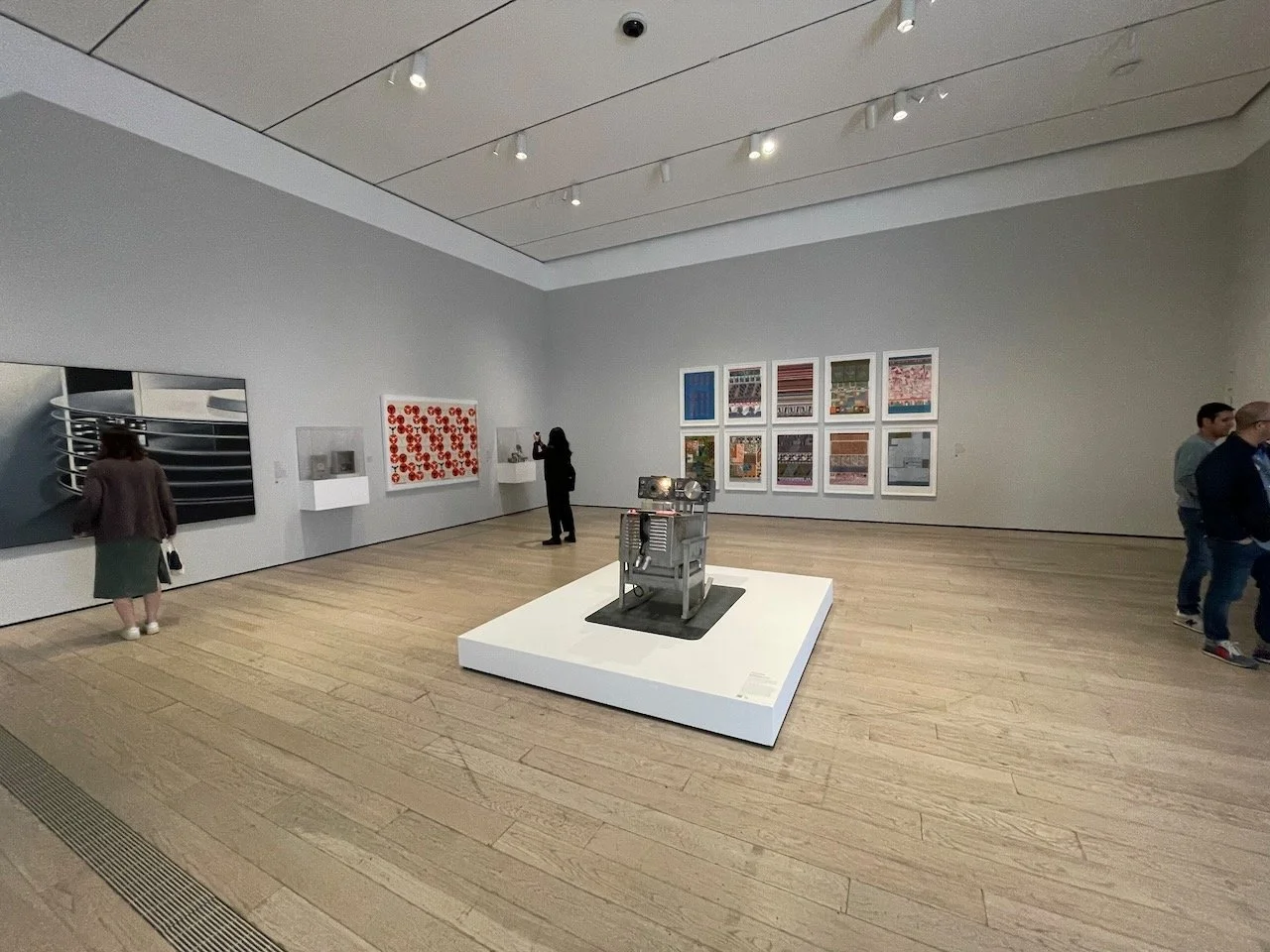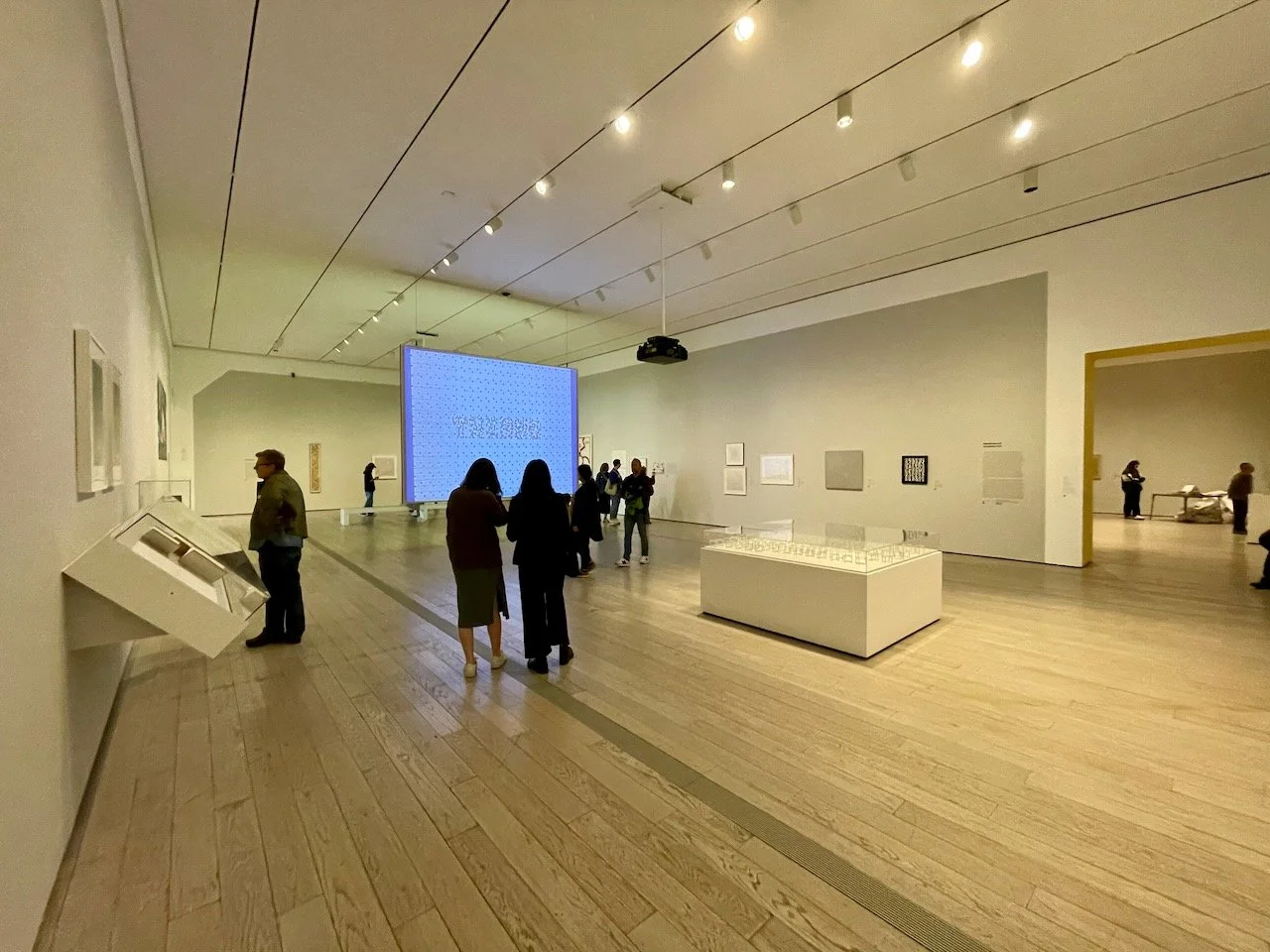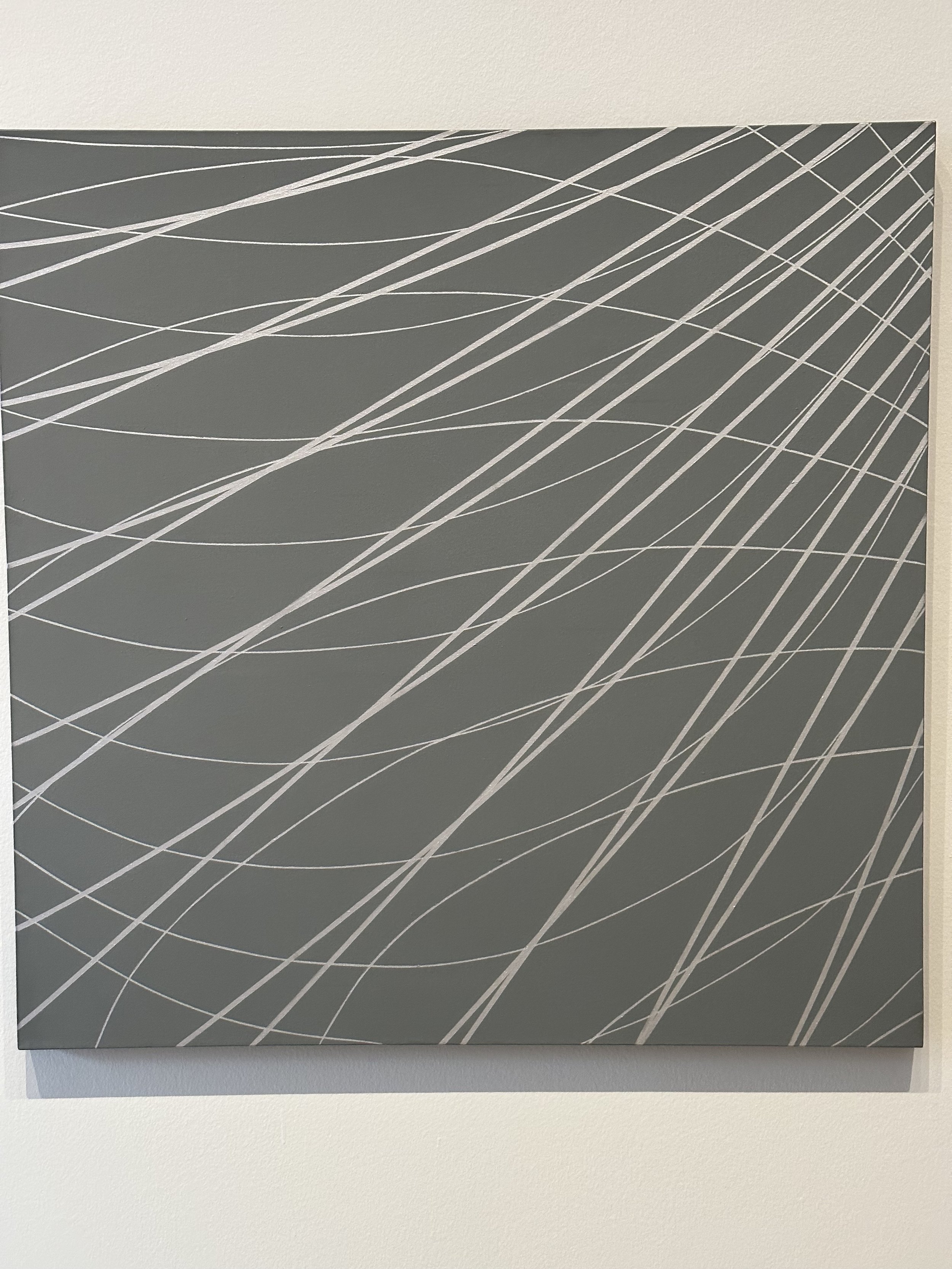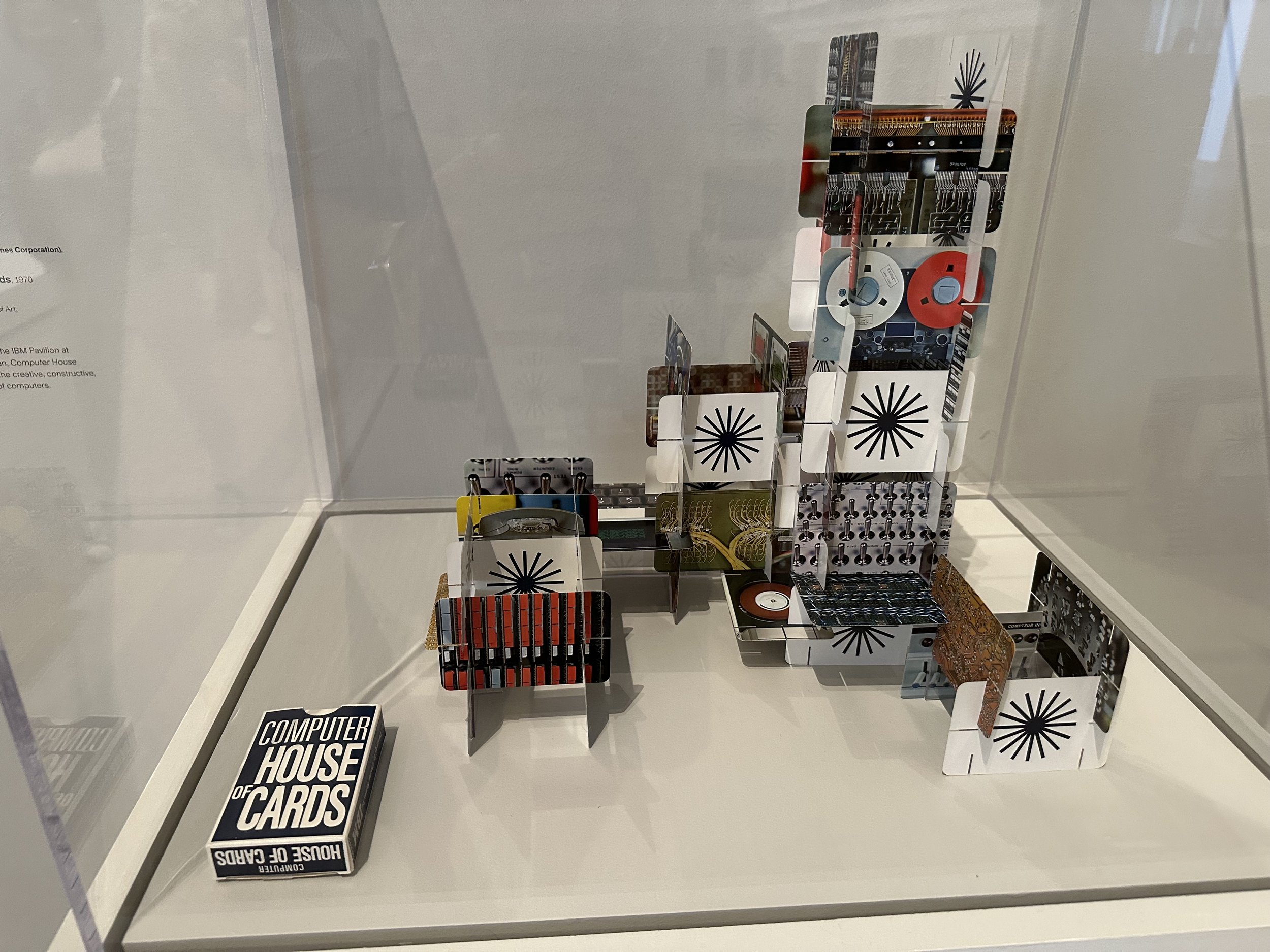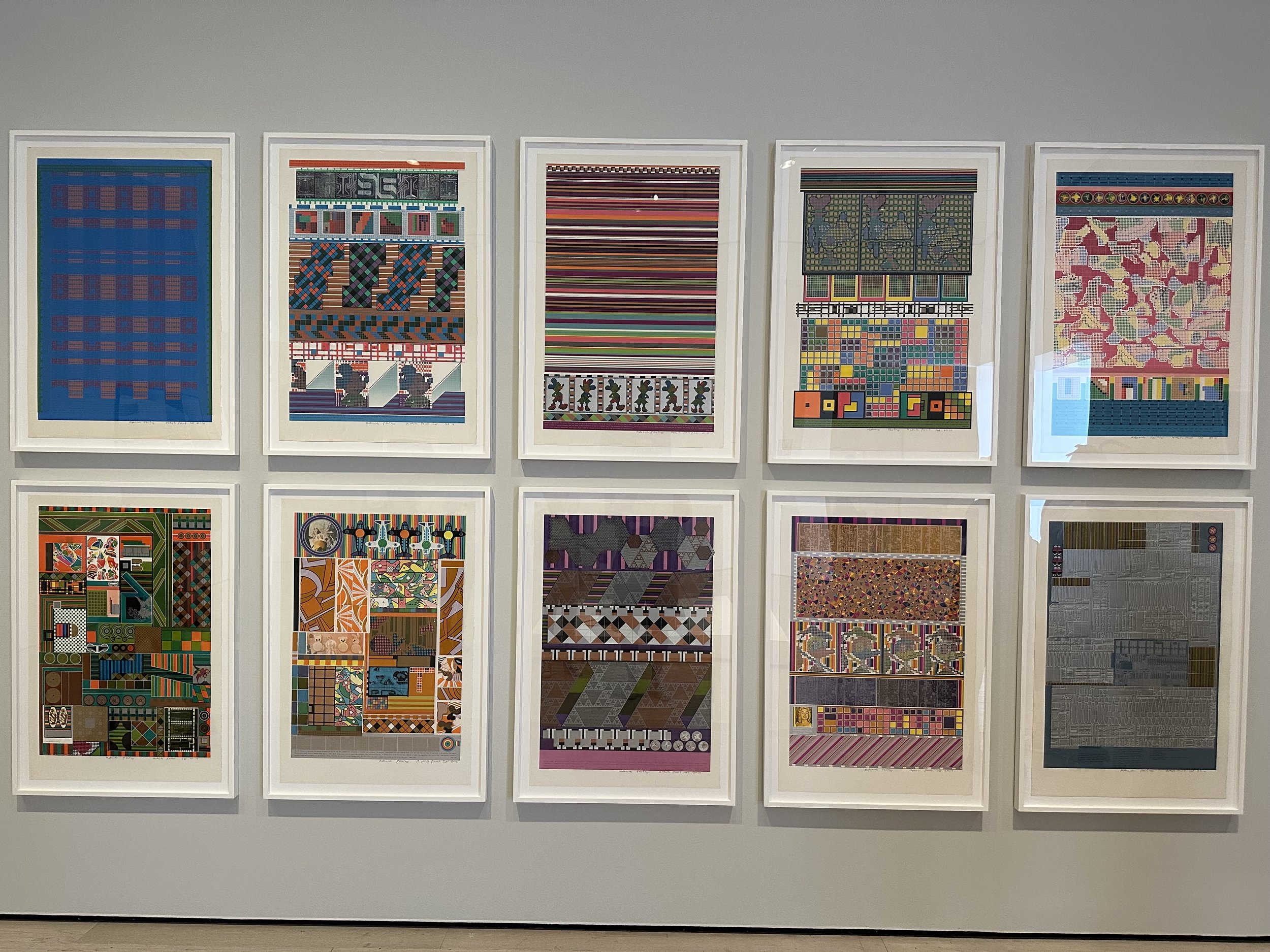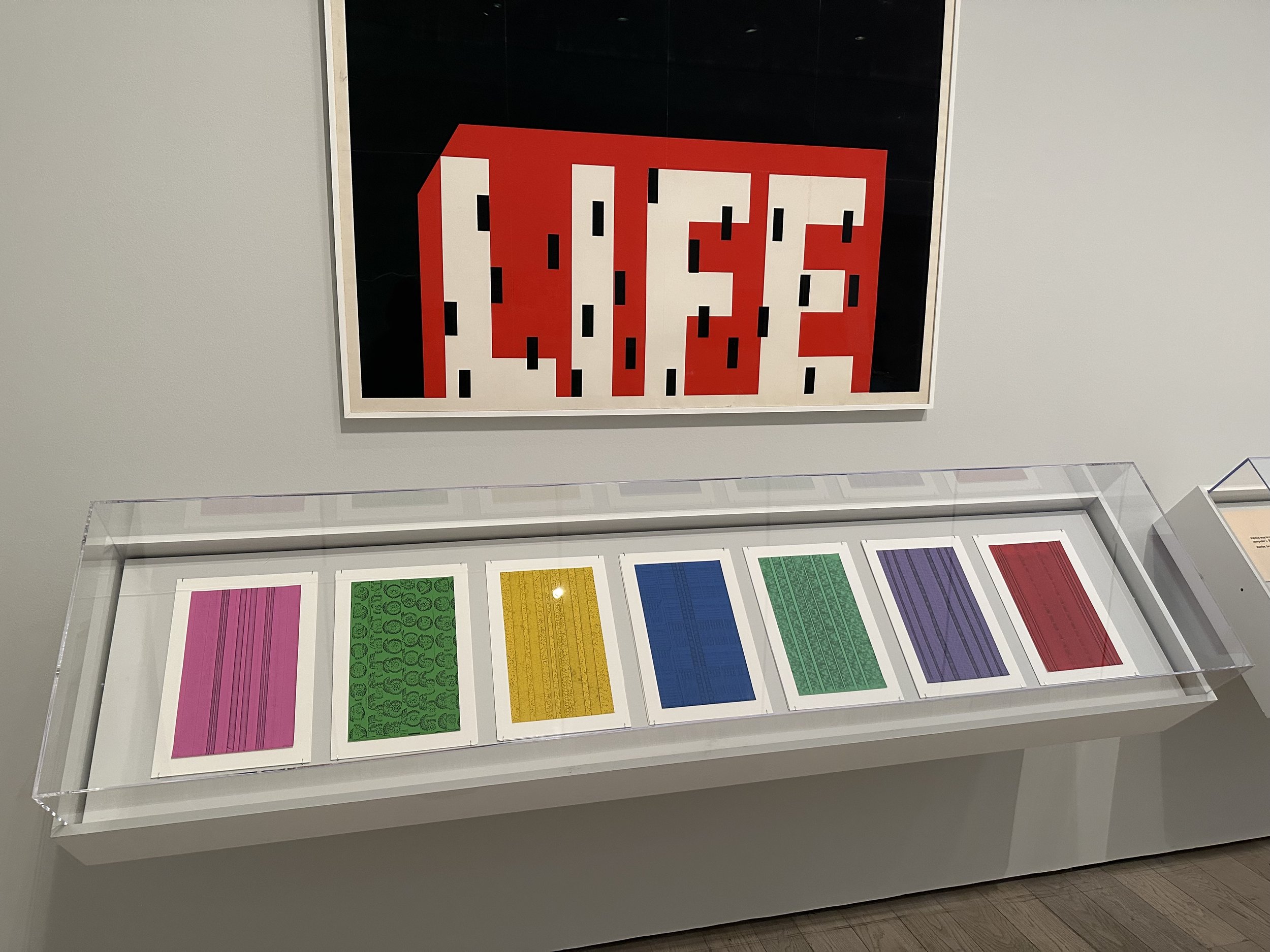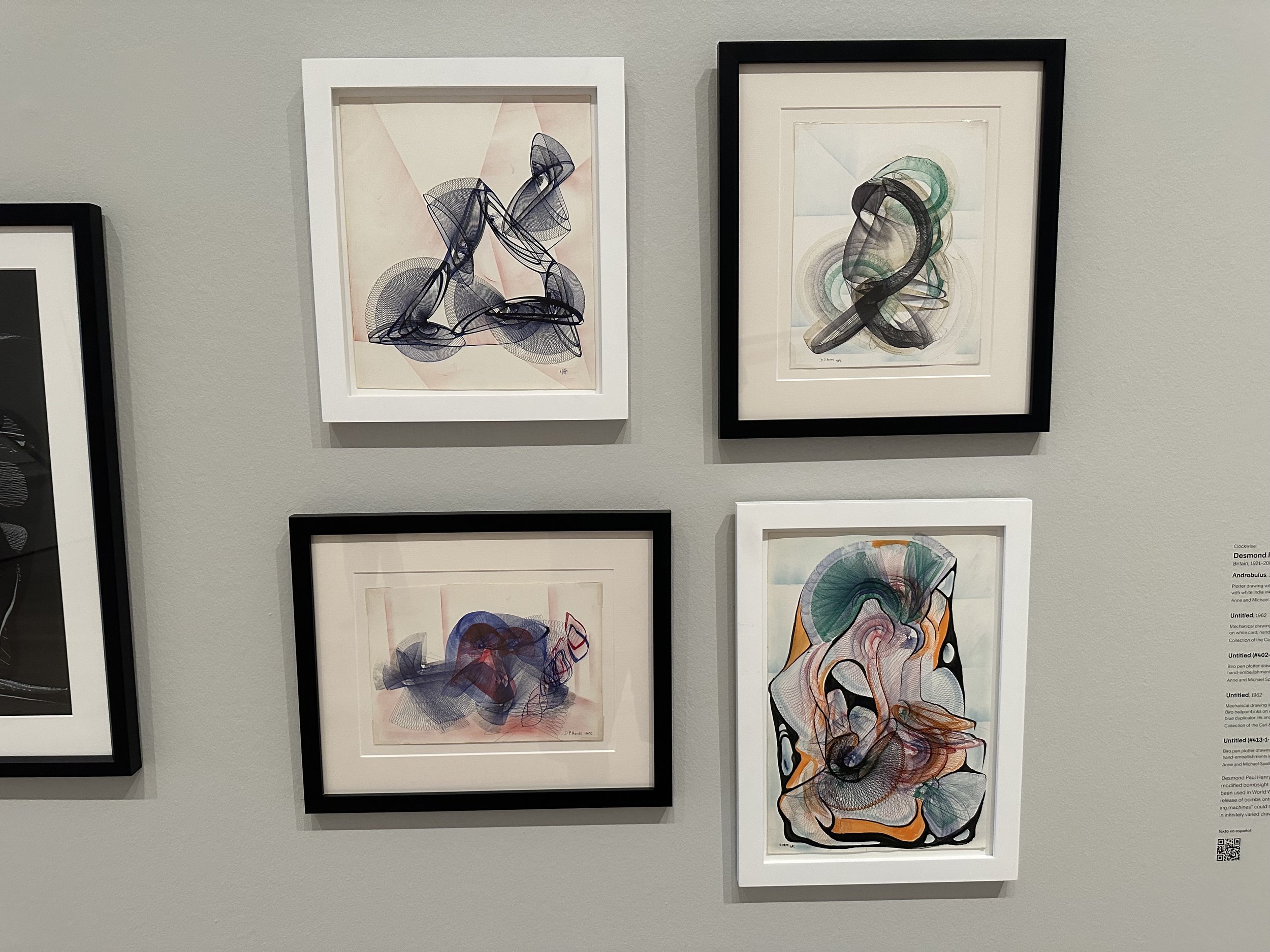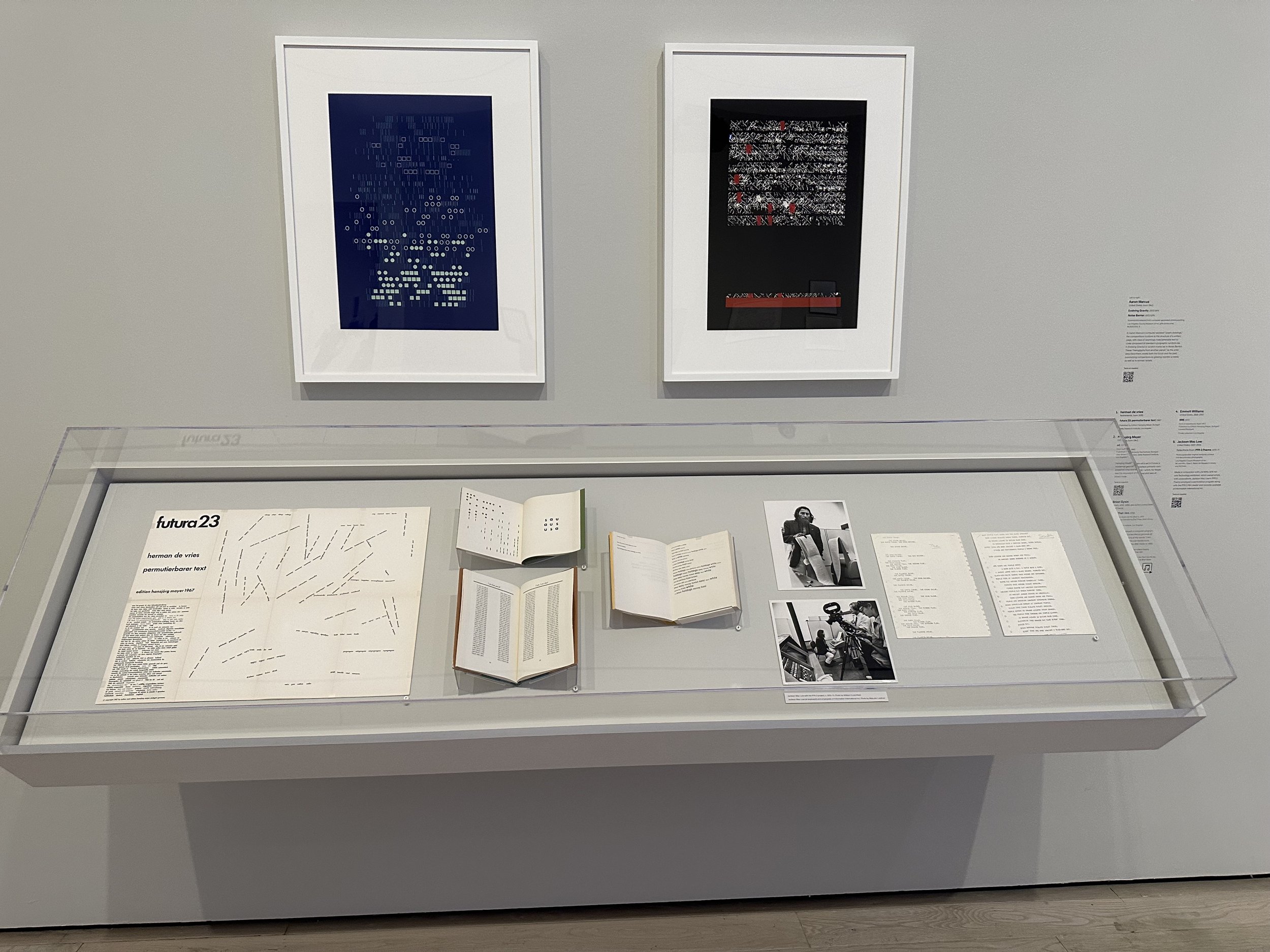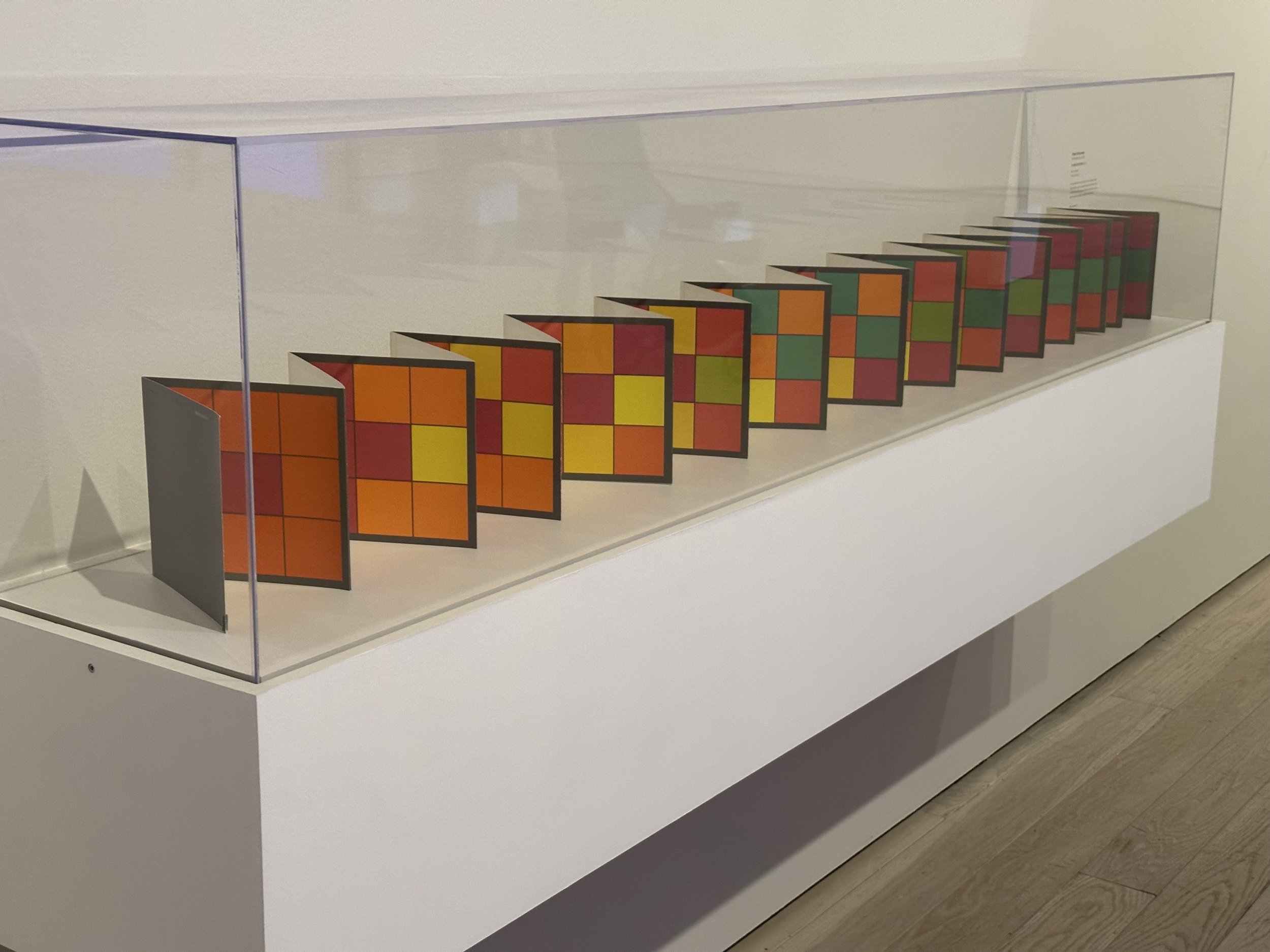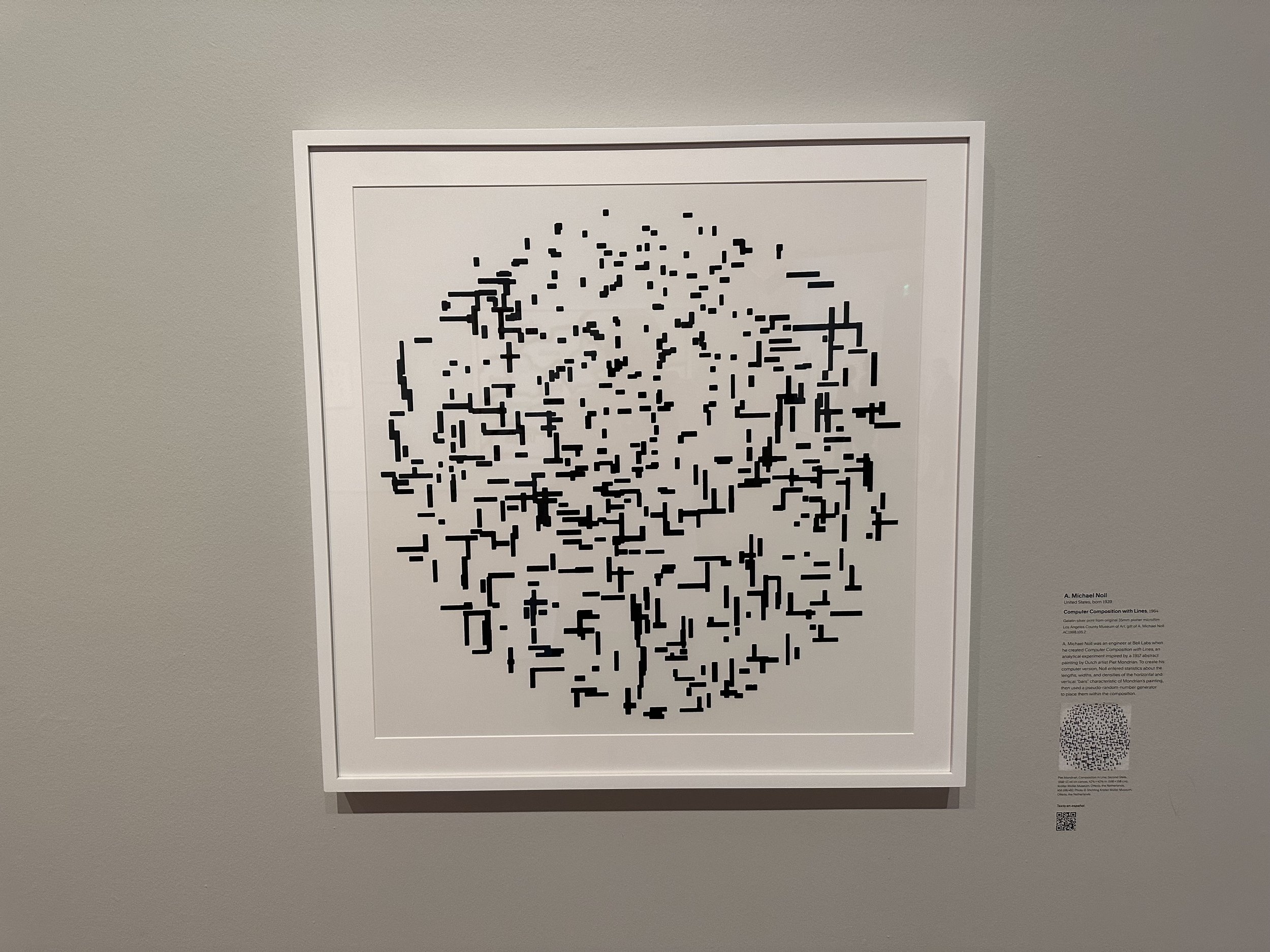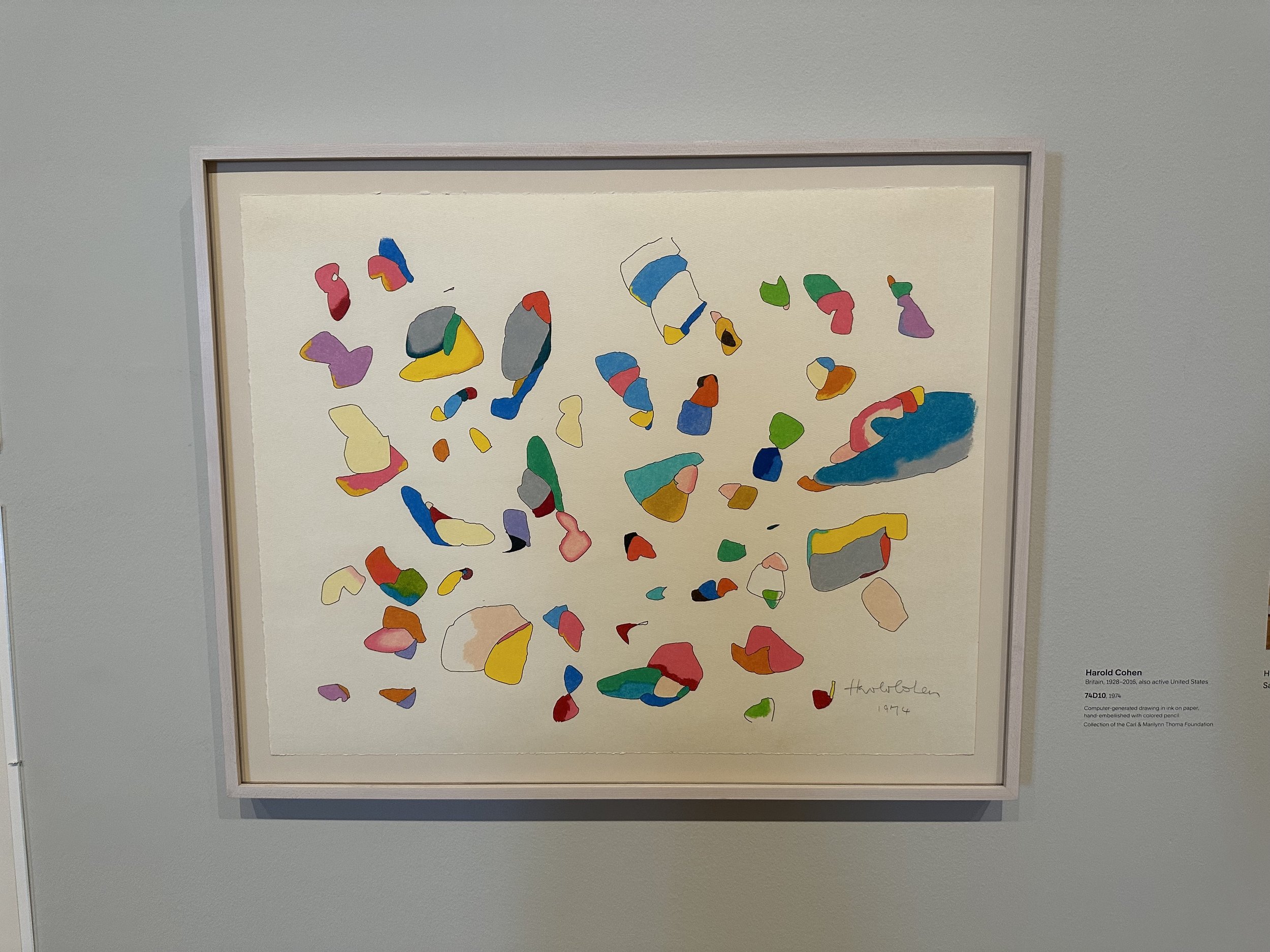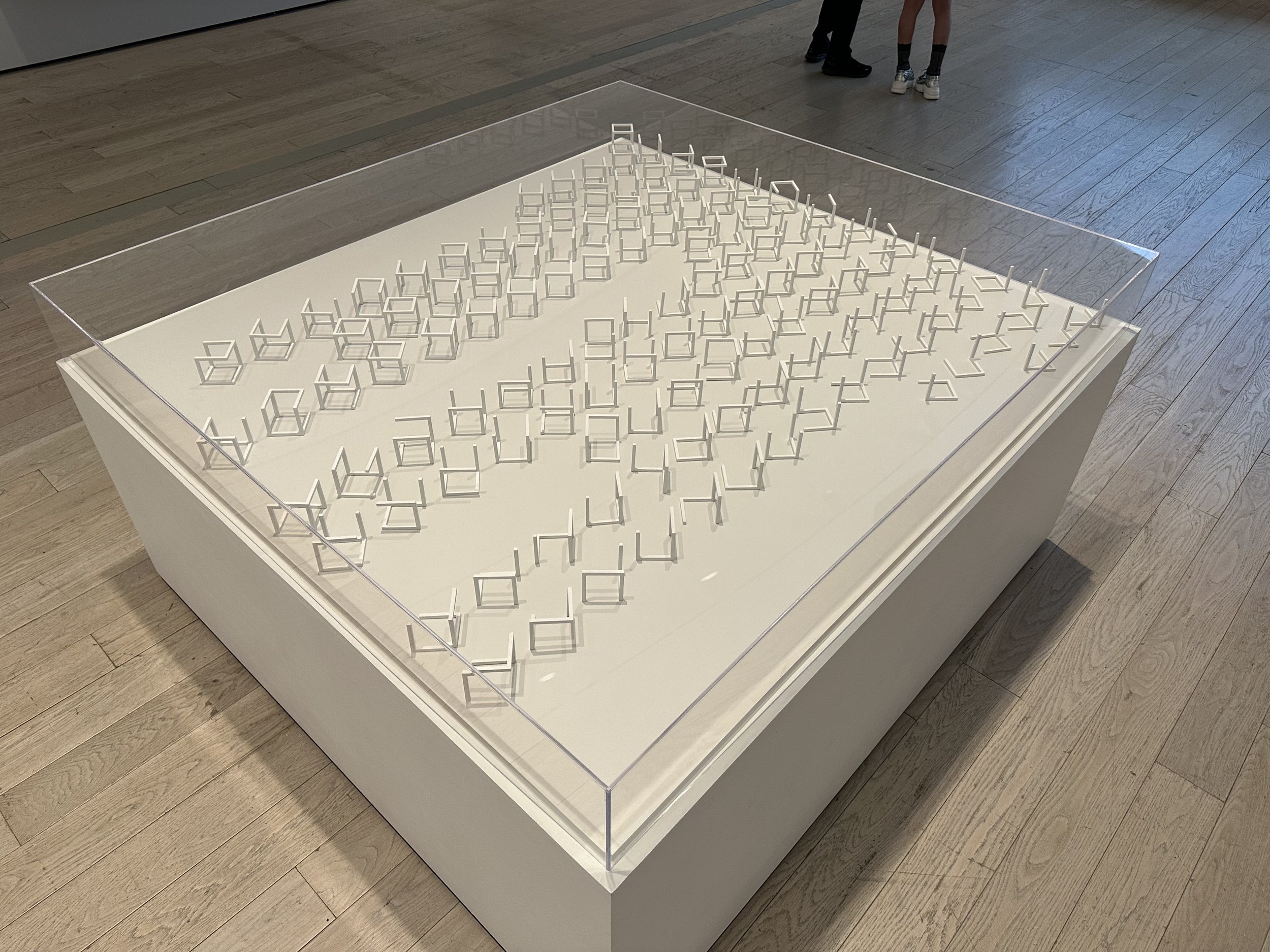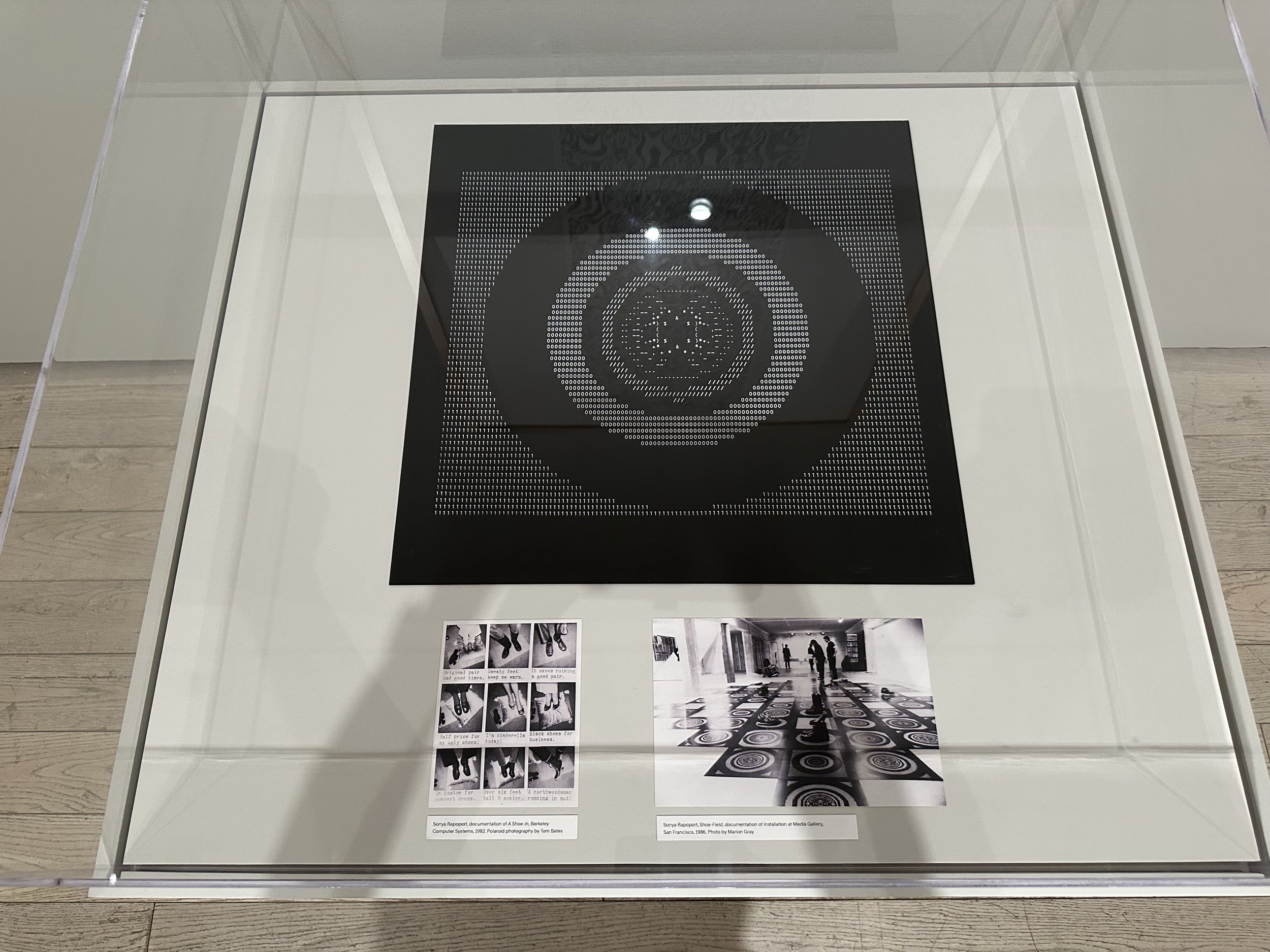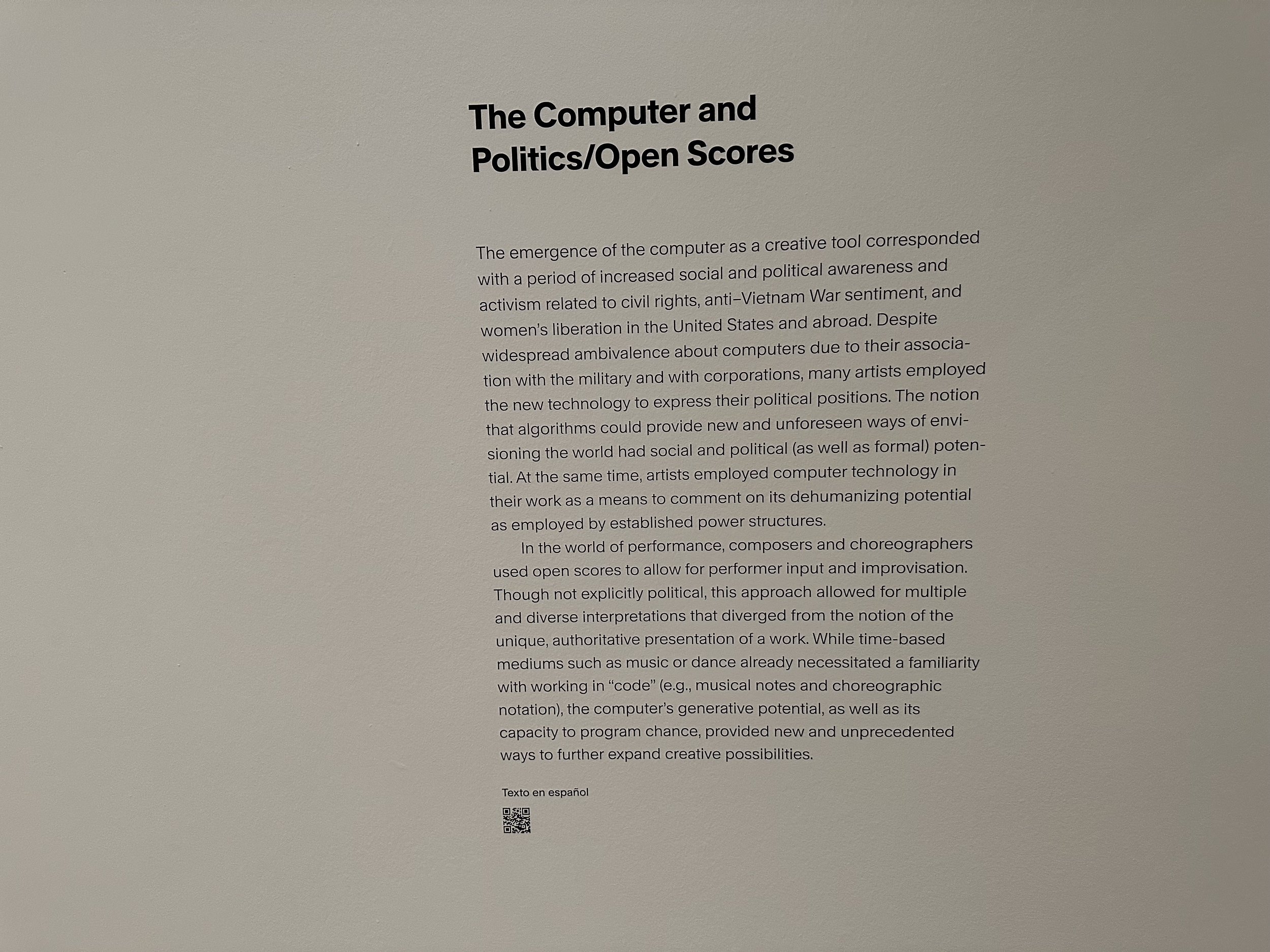Coded: Art Enters the Computer Age, 1952–1982
Sonya Rapoport, page 2 from Anasazi Series II, 1977 (detail), Los Angeles County Museum of Art, Purchased with funds provided by the Prints and Drawings Council and the Stephen A. Kanter Trust, by exchange, © Estate of Sonya Rapoport, photo © Museum Associates/LACMA
"Coded: Art Enters the Computer Age, 1952–1982" is an exhibition that explores the critical relationship between early computer art and other contemporary art movements of the time. It features international and interdisciplinary artworks from artists, writers, musicians, choreographers, and filmmakers who worked directly with computers and used algorithms or other systems to produce their work. The exhibition is organized by Leslie Jones, the curator of Prints and Drawings at the Los Angeles County Museum of Art (LACMA).
The exhibition begins with works from the early 1950s when only universities and research centers could afford access to computers. It focuses on these early experiments when artists had to collaborate with other researchers and engineers or teach themselves coding. For these artists, in addition to technical knowledge and aesthetic sense, it was also important to connect with art historical genres. Even the first generative artists like A. Michael Noll or Frieder Nake wanted to engage with the history of art, creating artworks that referred to works by Piet Mondrian or Paul Klee. The exhibition also features work by the Hungarian-born artist Vera Molnar, who was also engaged with constructivism and concrete art.
Frederick Hammersley, SCALLOP POTATOES #50, 1969. Los Angeles County Museum of Art, Gift of Frederick Hammersley Foundation. Courtesy of the New Mexico Museum of Art. Photography courtesy of Museum Associates/LACMA
The exhibition investigates the relationship between early computer art and other art movements, such as Op art, constructivism, conceptual art, Fluxus, and minimalism. This approach of connecting generative art with other mainstream art movements is not a new concept. Many researchers like Grant Taylor (“When the Machine Made Art: The Troubled History of Computer Art”, 2014), Charlie Gere (“Digital Culture”, 2022), and Philip Galanter (“Generative Art and Complexity Theory”, 2003) among others have provided detailed overviews of the early history of computer art and its connections to other art movements. However, "Coded" is the first major exhibition to bring these works together in one place and showcase them side-by-side. For the first time, visitors can see Sol LeWitt's cubes next to Manfred Mohr's work, a relationship that has often appeared in the literature but has never been seen by the public together. "Coded" also highlights a less well-known movement in Croatia, „New Tendencies”, which organized exhibitions between 1969 and 1973, making it one of the first attempts to introduce computer art to a wider audience by linking it to art historical movements.
The exhibition not only showcases fine art but also examples from other art fields, such as poetry, film, dance, and music, providing a comprehensive overview of the earliest days. The exhibition features compositions by Lejaren Hiller and Leonard Isaacson using computers, and Max Matthews, who developed the first music program at Bell Labs. The exhibition features a playlist of computer-generated music created with the help of Mark "Frosty" McNeill, which visitors can listen to on LACMA's website and within the exhibition. In addition to the playlist, the show also includes several other programs, such as Analívia Cordeiro's upcoming performance integrating dance and computer art.
Victor Vasarely, Vega-Kontosh-Va, 1971. Los Angeles County Museum of Art, gift of Mr. and Mrs. Donald Winston through the Contemporary Art Council, Courtesy Artists Rights Society (ARS), New York/ADAGP, Paris. Photography courtesy of Museum Associates/LACMA
The exhibition ends in 1982 when personal computers emerged, as LACMA wanted to represent only the early years of computer art and how the computer was used at that time. Although the exhibition features significant artists like Manfred Mohr, Vera Molnár, Francois Morellet, Frieder Nake, Harold Cohen, Charles Csuri, Desmond Paul Henry, and A. Michael Noll, there are some artists missing who also made important contributions to the development of this art form during its early stages.
Artists like Roman Verostko and Herbert W. Franke made a huge impact on computer-generated art. In 1982, Roman Verostko developed an interactive program that controls the drawing arm of a machine known as a pen plotter, creating intricate and complex drawings that were unlike anything else at the time. Franke was a pioneer in both computer-generated art and generative photography. He developed innovative techniques for creating abstract photographic images using computer algorithms, creating works that were both aesthetically pleasing and technically innovative.
Gottfried Jäger and Hein Gravenhorst were also significant artists in the field of generative photography. Their work explored the potential of using computers to generate and manipulate photographic images. Nancy Burson is known for being the first artist to experiment with composite photographs and for pioneering the technique of “morphing”, which involves using a computer program to overlay and manipulate photos. It is important to recognize the significance of these artists in computer-generated art and to acknowledge the ways in which they helped to shape and define the early years.
The Los Angeles County Museum of Art (LACMA) has a long-standing commitment to exhibiting and collecting works of art that incorporate technology and new media. The museum has been at the forefront of presenting and promoting the use of technology in art since the 1960s and has showcased groundbreaking exhibitions about computer art and digital media. This has helped to establish the museum as a leading institution in the field of new media and technology-based art. The museum's acquisition of Frederick Hammersley's drawing in 1972 was a significant moment in the development of computer art, and this exhibition "Coded: Art Enters the Computer Age, 1952-1982" continues this legacy.
Date: Feb 12–Jul 2, 2023
Location: Los Angeles County Museum of Art , BCAM, Level 2

